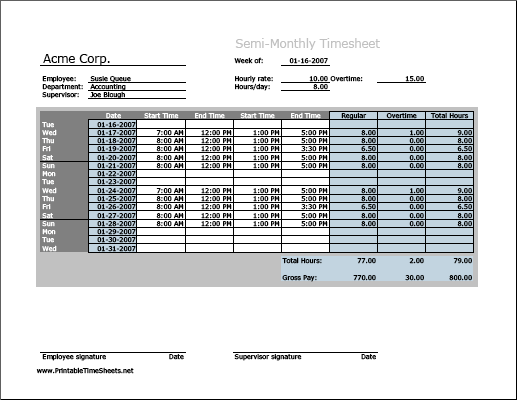
This process starts by accessing the undeposited funds account in QuickBooks Online to gather all transactions that should have been deposited into the bank. To verify the clearance of undeposited funds, navigate back to the undeposited funds account in QuickBooks Online. Pay close attention to the deposit amount and the account to which it is assigned. Make any necessary adjustments accountant for independent contractor or additions to the transaction to ensure it aligns with your bank statement. If you have multiple bank accounts in QuickBooks Online, make sure to select the correct account that aligns with the undeposited funds you are clearing. In the “Account” field, select the appropriate bank account where you will eventually deposit the funds.
How to Clear Undeposited Funds in QuickBooks Online
Once you have a clear understanding of undeposited funds in QuickBooks Online, the next step in clearing undeposited funds is to review and organize your transactions. This ensures that all the payments you want to clear are accounted for and properly classified before you proceed with creating a bank deposit. Think of the undeposited funds account as a virtual cash register or a temporary safe where you can store customer payments until you’re ready to deposit them. This feature is especially beneficial if you receive multiple payments throughout the day or week and want to combine them into does my small business need an accountant or a bookkeeper one bank deposit. Review your deposits to verify that the amounts recorded accurately reflect the total funds you deposited into your bank account.
How to Turn Off Undeposited Funds in QuickBooks Online?
In some cases, you may encounter a situation where some payments remain uncleared or unmatched. These payments might be the result of errors, duplicates, or intentionally left out of the bank deposit. In such cases, take the necessary time to reconcile and resolve the discrepancies to ensure accurate financial records.
When you receive a payment from a customer, QuickBooks automatically assigns it to the undeposited funds account, rather than directly to your bank account. Clearing out undeposited funds in QuickBooks involves specific procedures and steps to ensure accurate reconciliation of pending payments and deposits within the software. Clearing undeposited funds in QuickBooks Desktop involves specific procedures and steps to ensure accurate reconciliation of pending payments and deposits within the desktop software. Matching deposits to invoices and payments is a critical aspect of clearing undeposited funds in QuickBooks Online, ensuring accurate reconciliation and financial tracking.
- Regularly reconciling the Undeposited Funds account with the bank statement can help in detecting and rectifying any inconsistencies.
- You will need to use the Undeposited Funds account in QuickBooks Online when depositing more than one check or a combination of cash and checks on a single deposit slip.
- Ultimately, these adjustments play a critical role in maintaining the financial accuracy and reliability of the organization’s records.
- Undeposited funds in QuickBooks Online can cause confusion and inaccuracies in your financial records if not properly managed.
- This systematic approach involves cross-referencing all transactions recorded in the undeposited funds account with the corresponding entries in the bank statement and online banking records.
Step 3: Make Adjustments for Any Discrepancies
Duplicating deposit entries can result in overstated revenues, leading to incorrect financial metrics and potential compliance issues. Irregular or infrequent reconciliation can create discrepancies that may snowball into larger financial discrepancies over time, making it challenging to identify and rectify the root cause of errors. We began by explaining what undeposited funds are and why it’s essential to clear them regularly. Undeposited funds act as a temporary holding account for customer payments, providing a streamlined approach to manage cash flow and simplify your bookkeeping process. Once you have reviewed and organized your transactions in the undeposited funds account, it’s time to create a new bank deposit in QuickBooks Online. This bank deposit serves as the vehicle to clear the undeposited funds and law firm bookkeeping 101 record the actual deposit into your bank account.

Think of undeposited funds as a virtual cash register or a temporary safe where you store your customer payments until you’re ready to deposit them into your physical bank account. This helps you streamline your bookkeeping process and ensures that all your deposits and payments are accurately recorded. The main purpose of the Undeposited Funds account is to make bank reconciliations easier. It does this by allowing you to group cash and paper checks into a single deposit, mirroring how banks process and deposit your payments. When reviewing your transactions, it’s easier to spot discrepancies and missing deposits since your QuickBooks records align with the combined deposits on your bank statement.
Regularly reconciling the Undeposited Funds account with the bank statement can help in detecting and rectifying any inconsistencies. It also aids in maintaining an organized and up-to-date accounting system, which is essential for making informed business decisions and meeting regulatory requirements. Locate the “Save” button or a similar option within the form, and click on it to save the bank deposit. This account can typically be found in your Chart of Accounts or in the Banking section of your QuickBooks Online account. Whether you are new to QuickBooks Online or looking to optimize your bookkeeping workflow, this guide will equip you with the knowledge and tools to effectively manage and clear undeposited funds. As a QuickBooks ProAdvisor, Mark has extensive knowledge of QuickBooks products, allowing him to create valuable content that educates businesses on maximizing the benefits of the software.
By following the step-by-step methods outlined in this article, you’ll gain a clear understanding of how to manage undeposited funds effectively, ensuring the accuracy of your financial data. This crucial process requires an in-depth review of financial records, such as bank statements, receipts, and transaction logs, to pinpoint discrepancies or omissions. With precision and attention to detail, each transaction must be matched with corresponding records to confirm their status. Accuracy is paramount as discrepancies can impact financial reporting and decision-making. Regular reconciliation of undeposited funds is essential for ensuring the proper recording of deposits, reducing errors, and maintaining the integrity of financial reporting. Then, cross-referencing this information with the actual bank deposits helps to identify any discrepancies in the records.
